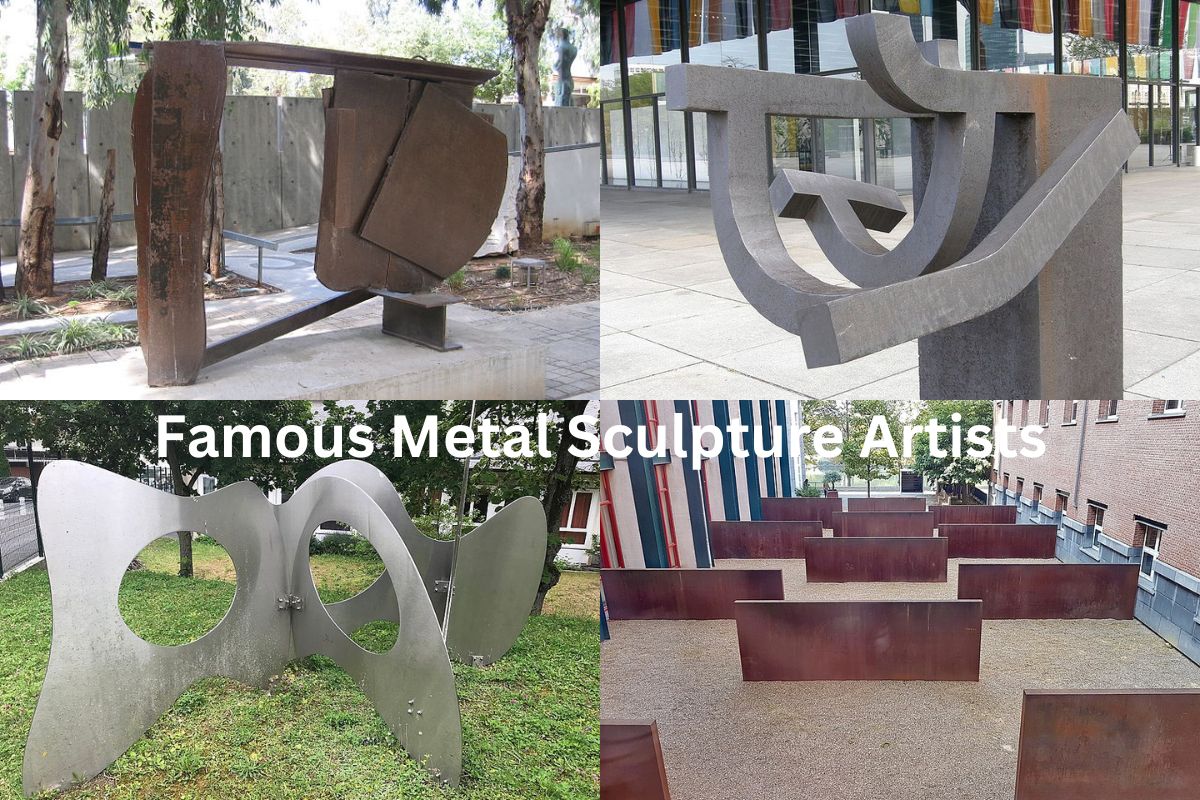Metal sculpture is a fascinating art form that requires skill, creativity, and patience. It involves transforming raw materials such as steel, bronze, copper, or aluminum into intricate and striking three-dimensional forms.
Over the years, many talented artists have emerged in the field of metal sculpture, each with their unique style and approach.
Some of the most famous metal sculpture artists include Alexander Calder, known for his mobiles and large-scale public sculptures; Louise Bourgeois, who created a wide range of sculptures from bronze spiders to abstract figures; and David Smith, who combined elements of both abstract and figurative sculpture using welded steel.
These metal sculpture artists, along with many others, have left a lasting impact on the art world with their unique contributions to the medium.
Their works are often on display in museums, galleries, and public spaces around the world and continue to inspire and captivate audiences with their creativity, skill, and innovation.
Famous Metal Sculpture Artists
1. David Smith
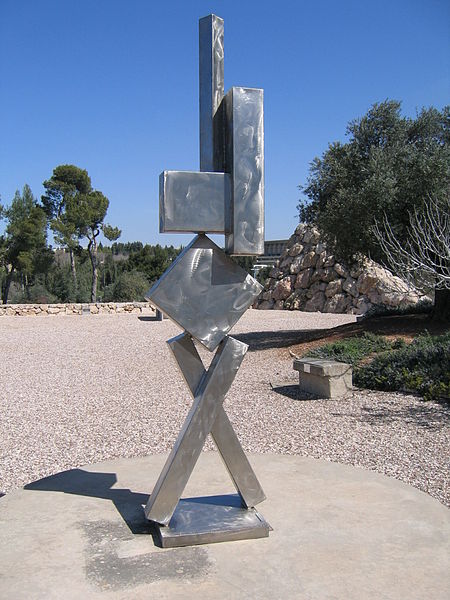
David Smith (1906-1965) was an American artist who is best known for his large-scale metal sculptures. Born in Indiana, Smith studied at the Art Students League in New York City and began his career as a painter.
However, he soon turned to sculpture and began experimenting with welded metal in the 1930s, becoming one of the pioneers of the technique in America.
Smith’s sculptures often combined abstract and figurative elements and explored themes such as industry, nature, and the human form. He worked with a variety of materials, including stainless steel, bronze, and iron, and his pieces ranged from small tabletop sculptures to massive outdoor installations.
Smith’s work has been exhibited in major museums around the world, including the Museum of Modern Art in New York, the Tate Modern in London, and the Centre Pompidou in Paris.
He is considered one of the most important sculptors of the 20th century and his legacy continues to influence artists today.
2. Anthony Caro
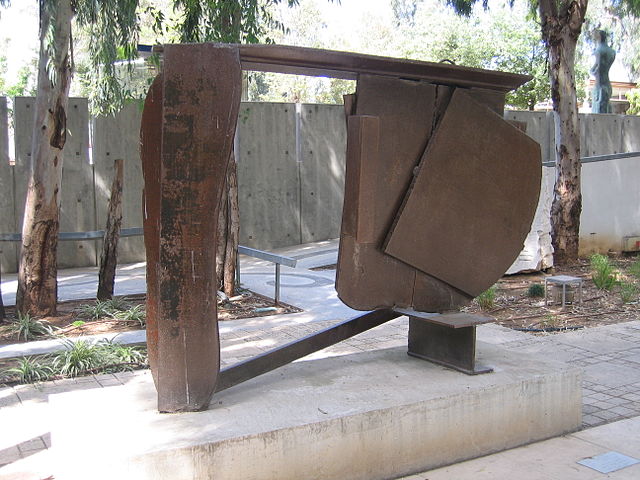
Anthony Caro (1924-2013) was a British sculptor who is best known for his abstract metal sculptures. Born in Surrey, England, Caro studied at the Royal Academy Schools in London and began his career as an assistant to sculptor Henry Moore.
In the 1950s, he started experimenting with steel and welding techniques, moving away from traditional sculptural materials like stone and bronze.
Caro’s sculptures are characterized by their playful use of color and form. He often created large, abstract structures that invited the viewer to interact with them, using negative space to create interesting shapes and angles.
Caro’s work challenged the traditional ideas of sculpture, blurring the lines between sculpture and architecture.
Caro’s work has been exhibited in major museums around the world, including the Museum of Modern Art in New York, the Tate Modern in London, and the National Gallery of Art in Washington, D.C.
He was awarded the Order of Merit, one of the highest honors in the UK, in 2000. Caro is considered one of the most important sculptors of the 20th century, and his legacy continues to inspire and influence artists today.
3. Marino Di Teana
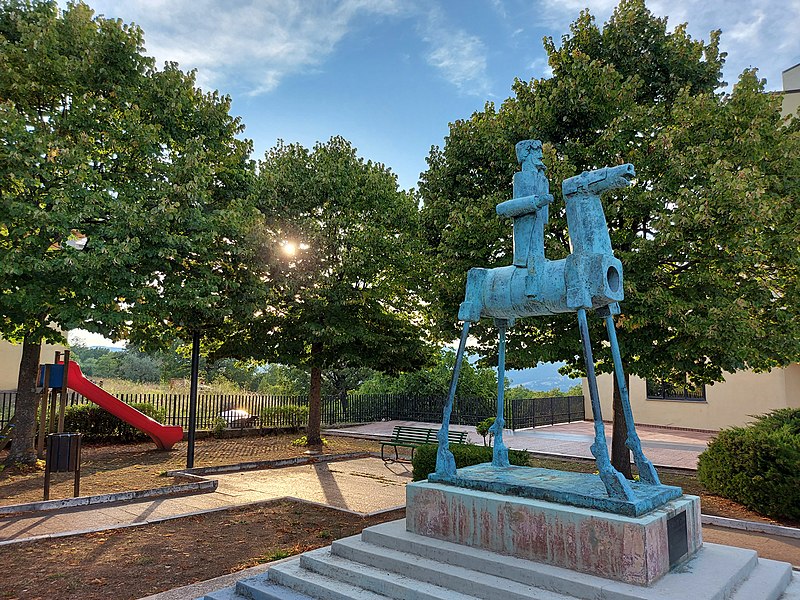
Marino Di Teana (1920-2012) was a French-Italian sculptor who is known for his monumental abstract metal sculptures. Born in Italy, Di Teana studied architecture in Rome and moved to Paris in 1952, where he began his career as an architect.
However, he soon turned to sculpture, focusing on large-scale works that incorporated industrial materials such as steel, concrete, and aluminum.
Di Teana’s sculptures often explored the relationship between space, light, and form. His pieces ranged from massive outdoor installations to smaller indoor sculptures, and they were often designed to interact with their surroundings.
He used geometric shapes and clean lines to create a sense of balance and harmony, and his work was characterized by a sense of industrial aesthetic and minimalist style.
Di Teana’s work has been exhibited in major museums and galleries around the world, including the Museum of Modern Art in Paris and the Venice Biennale. He was awarded the Grand Prix de Rome in 1953, and in 1964 he was commissioned to create a large sculpture for the French city of Grenoble.
Di Teana is considered one of the most important sculptors of the 20th century, and his work continues to inspire and influence artists today.
4. Philippe Hiquily
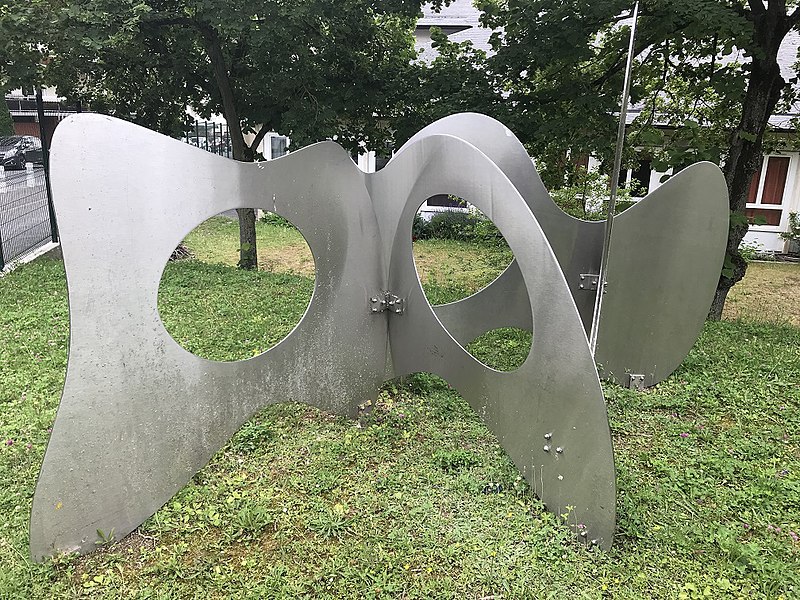
Philippe Hiquily (1925-2013) was a French sculptor known for his unique approach to figurative sculpture. Born in Paris, Hiquily began his career as a graphic designer before turning to sculpture in the 1950s.
He was largely self-taught and developed his own distinctive style that combined elements of Pop Art, Surrealism, and abstraction.
Hiquily’s sculptures often featured stylized human figures, animals, and abstract forms, and he used a variety of materials including bronze, aluminum, and steel.
He was known for his playful approach to form, often creating pieces that seemed to defy gravity or balance on a single point. Hiquily’s work was characterized by its humor, wit, and sense of irreverence.
Hiquily’s work has been exhibited in major museums and galleries around the world, including the Centre Pompidou in Paris and the Museum of Modern Art in New York.
He was awarded the Grand Prix des Arts de la Ville de Paris in 1994, and his work continues to be highly sought after by collectors and art enthusiasts today.
5. Walenty Pytel
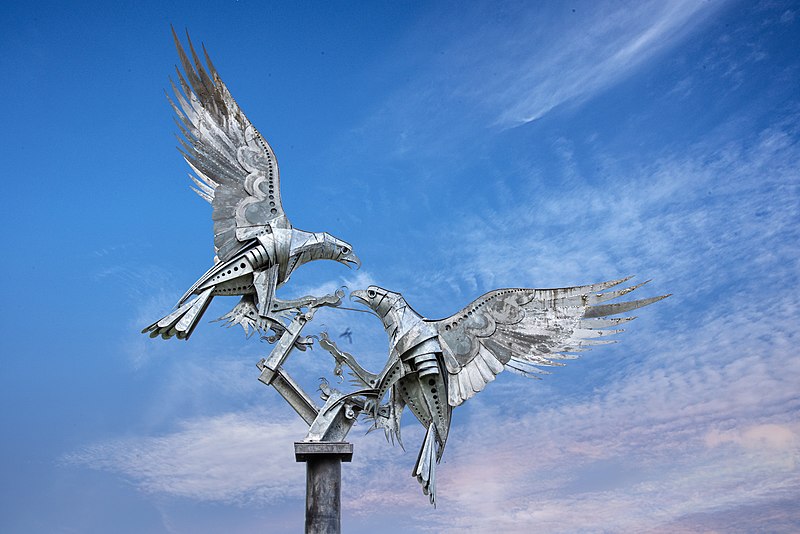
Walenty Pytel (born 1928) is a British-Polish sculptor known for his distinctive abstract metal sculptures. Born in Poland, Pytel studied sculpture at the Warsaw Academy of Fine Arts before moving to England in the 1950s.
He established himself as a sculptor in London and has since created many public artworks across the UK.
Pytel’s sculptures are characterized by their fluid lines and organic shapes, often inspired by the natural world. He uses materials such as steel, copper, and bronze to create his works, and his use of texture and surface finish adds depth and dimension to his sculptures.
Pytel’s work is often large in scale and is intended to interact with the surrounding environment, inviting the viewer to engage with the sculpture from different angles.
Pytel’s work has been exhibited in many public spaces across the UK, including the London Hilton Hotel, the Birmingham City Council House, and the University of Warwick.
He has also received numerous commissions for public sculptures, including the “The Bandstand” in Bedford, and the “Gateway” in Bromsgrove.
Pytel’s work has been recognized with numerous awards, including the Gold Medal for Sculpture from the Royal Society of British Sculptors in 2002. He is considered one of the most important sculptors working in Britain today.
6. Alexander Calder
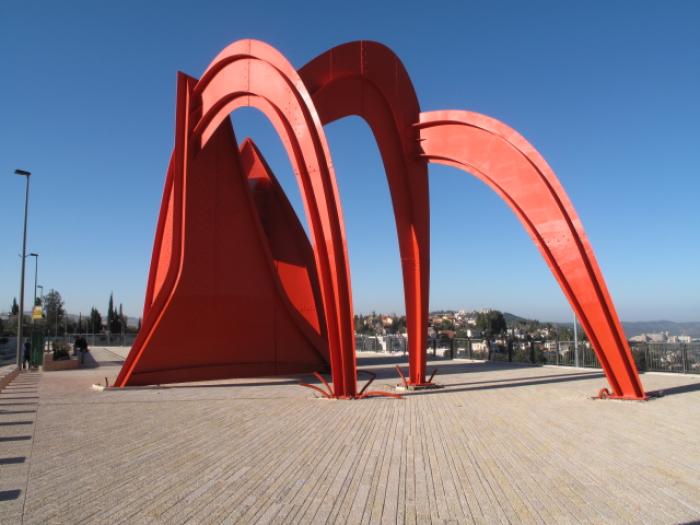
Alexander Calder (1898-1976) was an American artist who is best known for his invention of the mobile.
Born in Pennsylvania, Calder studied mechanical engineering before turning to art. He began his career as a painter but soon turned to sculpture, experimenting with a range of materials and techniques.
Calder’s mobiles are characterized by their playful use of color, form, and movement. They consist of abstract shapes suspended on wires, which are balanced and move in response to air currents.
Calder also created a series of large-scale public sculptures, often made from steel, which he called “stabiles”. These works are characterized by their bold forms and vibrant colors, and they are designed to be viewed from multiple angles.
Calder’s work has been exhibited in major museums around the world, including the Museum of Modern Art in New York and the Centre Pompidou in Paris.
He was awarded the Presidential Medal of Freedom in 1977, the highest civilian honor in the United States, and he is considered one of the most important artists of the 20th century. Calder’s legacy continues to influence artists today, particularly in the fields of sculpture and kinetic art.
7. Louise Bourgeois
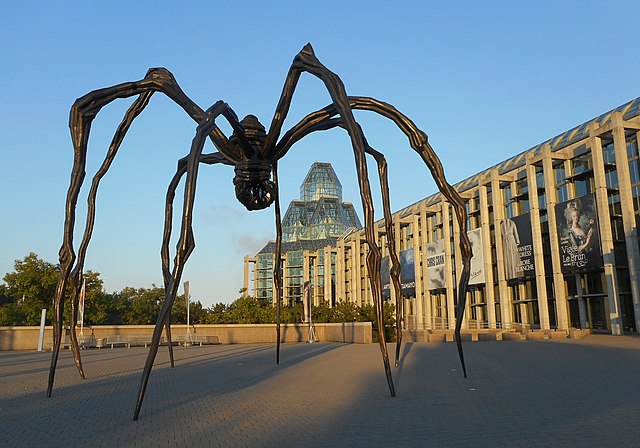
Louise Bourgeois (1911-2010) was a French-American artist known for her work in a wide range of media, including sculpture, painting, and printmaking. Born in Paris, Bourgeois studied art at various schools in Europe and the United States. She began her career as a painter but turned to sculpture in the 1940s.
Bourgeois’ sculptures are characterized by their use of organic forms and materials, such as wood, marble, bronze, and fabric. She often explored themes of feminism, sexuality, and the body in her work, and her pieces often had an emotional and psychological resonance.
One of Bourgeois’ most famous works is the series of spider sculptures she created in the 1990s. These large-scale bronze sculptures were inspired by her mother, who was a tapestry restorer and had a workshop in which spiders often appeared.
Bourgeois saw the spider as a symbol of protection and nurturing, and the sculptures are both powerful and delicate.
Bourgeois’ work has been exhibited in major museums around the world, including the Museum of Modern Art in New York and the Tate Modern in London.
She was awarded the National Medal of Arts in 1997, and in 2009 she became the first woman to have a retrospective at the Guggenheim Museum in New York.
Bourgeois is considered one of the most important artists of the 20th century, and her legacy continues to influence artists today.
8. Richard Serra
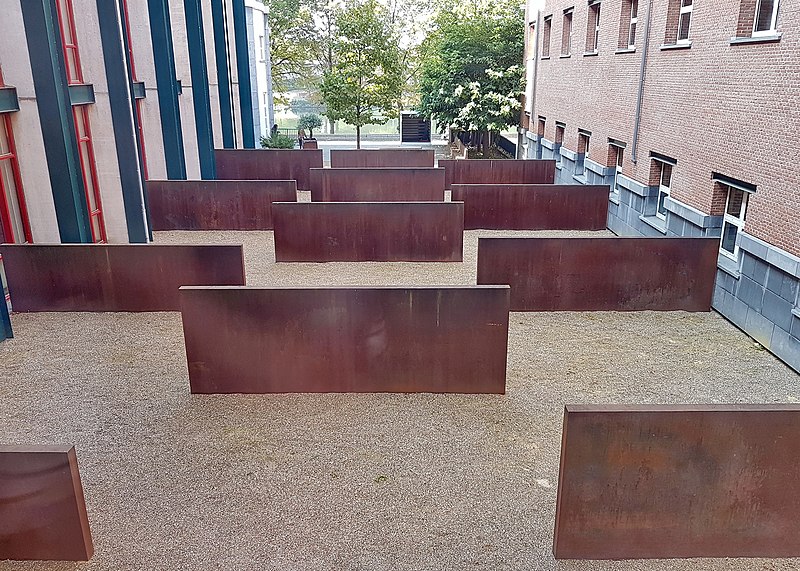
Richard Serra (born 1939) is an American artist known for his massive, site-specific sculptures made from industrial materials such as steel, lead, and concrete.
Born in San Francisco, Serra studied art at various schools before moving to New York in the 1960s. He first gained recognition for his minimalistic sculptures made from materials like rubber and fiberglass, but soon turned to the use of steel.
Serra’s sculptures are characterized by their monumental scale and their ability to create immersive environments. His pieces often consist of large sheets of steel, arranged in a way that alters the viewer’s perception of space and form.
Serra’s work challenges the traditional notion of sculpture as an object that is separate from its surroundings, instead creating pieces that are inextricably linked to their environment.
Serra’s work has been exhibited in major museums and galleries around the world, including the Museum of Modern Art in New York and the Guggenheim Museum Bilbao.
He was awarded the Golden Lion for Sculpture at the Venice Biennale in 1986, and in 2010 he received the Japan Art Association’s Praemium Imperiale prize for sculpture. Serra is considered one of the most important sculptors of the 20th century, and his work continues to influence and inspire artists today.
9. Eduardo Chillida
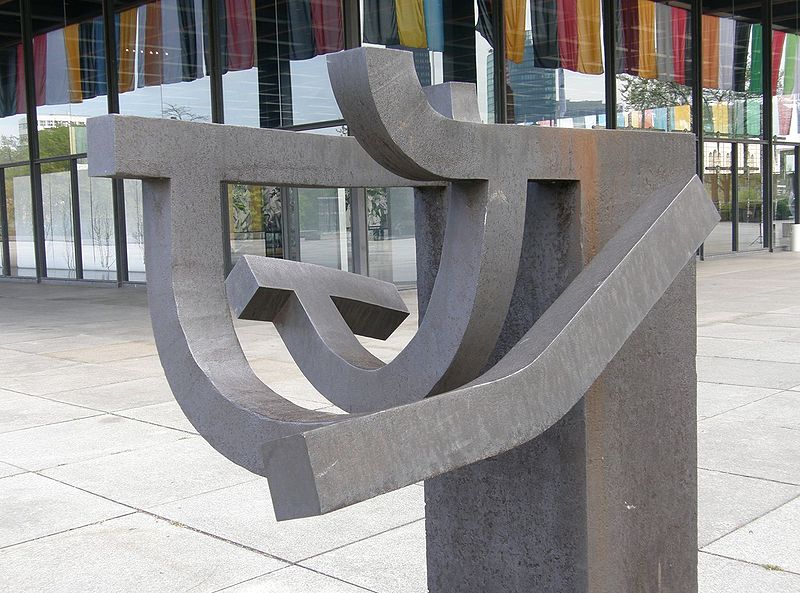
Eduardo Chillida (1924-2002) was a Basque sculptor known for his massive abstract sculptures that explore the relationship between space and form. Born in San Sebastian, Spain, Chillida initially studied architecture before turning to sculpture in the 1950s.
Chillida’s sculptures are characterized by their use of natural materials such as steel, granite, and alabaster. He often worked with large blocks of material, carving them into abstract shapes that seem to defy gravity. Chillida’s work is known for its monumental scale and its ability to create a sense of weight and presence.
Chillida also created a series of public sculptures that are integrated into their surroundings, inviting viewers to engage with them on both a physical and a psychological level. He was interested in the tension between the natural and the man-made, and his sculptures often evoke a sense of the organic and the industrial.
Chillida’s work has been exhibited in major museums and galleries around the world, including the Museum of Modern Art in New York and the Guggenheim Bilbao. He was awarded the Praemium Imperiale prize for sculpture in 1991 and was made a member of the Royal Academy of Fine Arts of San Fernando in Madrid in 1993. Chillida is considered one of the most important sculptors of the 20th century, and his legacy continues to inspire and influence artists today.
10. Bill Barrett
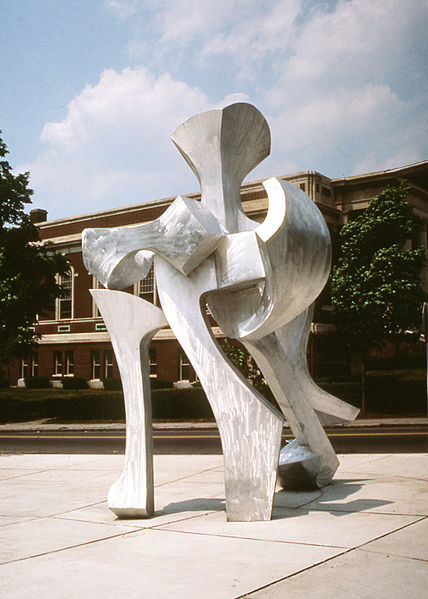
Bill Barrett was an influential figure in the world of sculpture, particularly in the field of abstract metal sculpture. He was born in Oklahoma in 1934 and grew up in California, where he attended the Art Center College of Design.
After working for several years as an illustrator, he turned to sculpture, using industrial materials such as steel, aluminum, and bronze to create abstract forms.
Barrett’s sculptures are characterized by their dynamic, often asymmetrical shapes, and their use of negative space to create a sense of movement and tension.
He was interested in exploring the relationship between the viewer and the sculpture, and many of his pieces are designed to be experienced from multiple angles. Barrett was also a painter and a jeweler, and his work often incorporated elements of these disciplines.
Barrett’s work has been exhibited in galleries and museums around the world, including the Smithsonian American Art Museum in Washington, D.C., and the Los Angeles County Museum of Art.
He received numerous awards and honors for his sculptures, including the Prix de Rome fellowship from the American Academy in Rome and a grant from the National Endowment for the Arts. Barrett is considered one of the most important sculptors of his generation, and his legacy continues to inspire and influence artists today.

